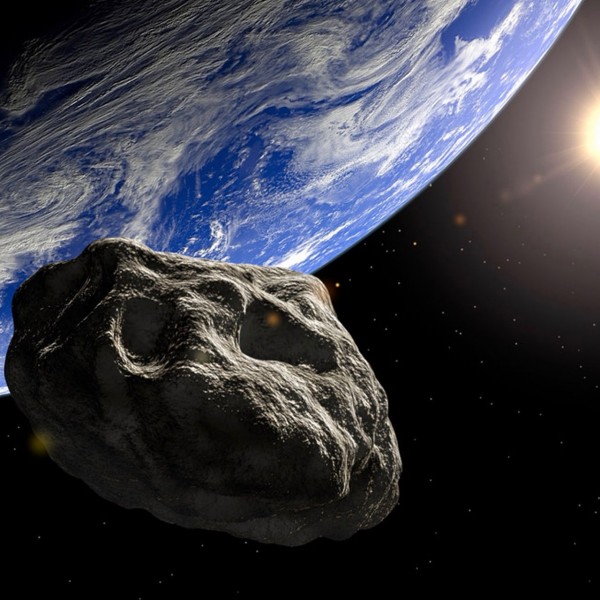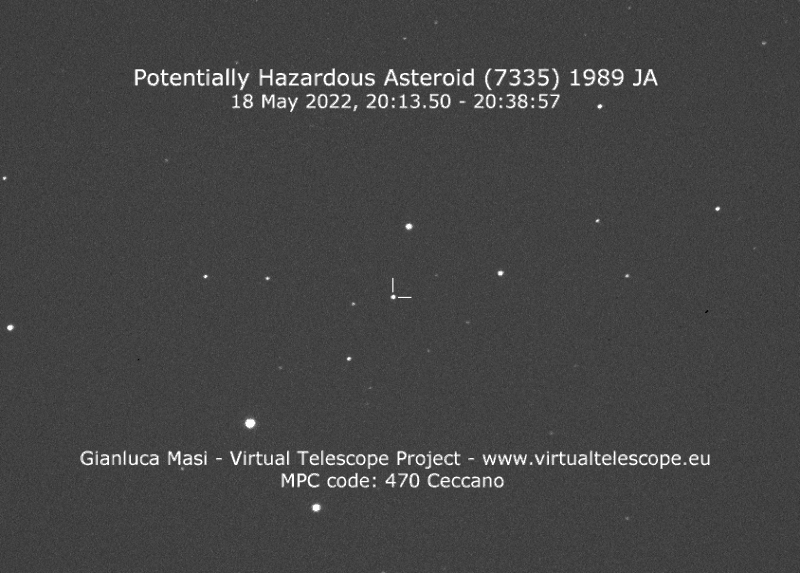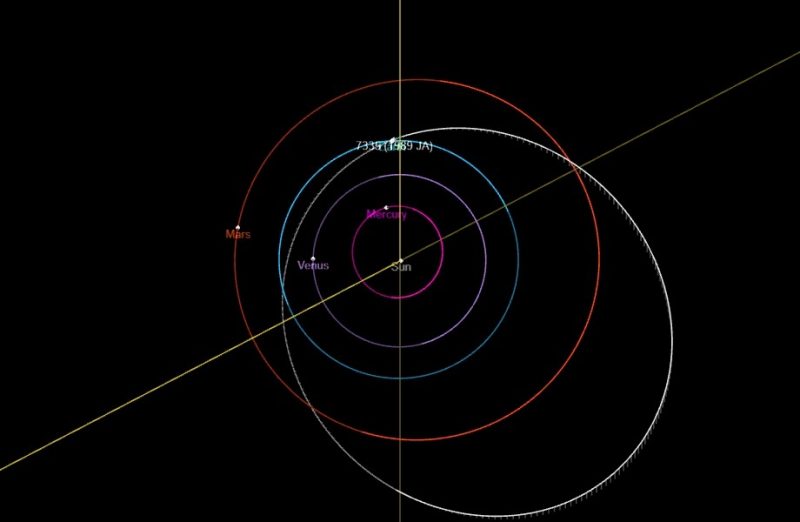A large asteroid will safely pass by our planet on May 27, 2022. Although it won’t be visible to the unaided eye, both professional and amateur astronomers will be looking at the huge space rock as it sweeps past. Asteroid 7335 (1989 JA) is a stony Apollo-type asteroid (just like the Chelyabinsk asteroid that entered Earth’s atmosphere in 2013, shattering windows over six Russian cities).

Artist’s concept of an asteroid passing near Earth, similar to large asteroid 7335. Image via Daily Mirror.
In this case, asteroid 7335 (1989 JA) won’t get that close. But, the May 27 approach is the closest calculated pass of this particular space rock to date, and for the next 200 years.
Specifically, closest approach to Earth happens at 14:26 UTC (10:26 a.m. ET) on May 27.
Want to watch it online? Well, you can! In two separate online events – May 26 and 27 – the Virtual Telescope Project will be showing the asteroid live from both Chile and Australia. Click here for more details about these events, and see the poster below.

Potentially Hazardous Asteroid (7335) 1989 JA: Poster of 2 livestream events via the Virtual Telescope Project in Rome.

Gianluca Masi of the Virtual Telescope Project captured this image of asteroid 7335 (1989 JA) on May 18, 2022. Time is in UTC. Here, it appears to move among the stars because it’s vastly closer to us than the stars. Image via Virtual Telescope Project.
It’s a Potentially Hazardous Asteroid
Additionally, asteroid 7335 (1989 JA) orbits the sun every 2.35 years. It has an estimated diameter of 3,609 feet (1,100 meters). As an illustration, that’s about 10 American football fields laid end to end.
Also, because of its size – and because it sometimes comes close – asteroid 7335 (1989 JA) meets the criteria for a Potentially Hazardous Asteroid. However, there is absolutely no danger during the 2022 flyby. Indeed, the space rock will be as far as 10.5 times the Earth-moon distance, at 2.5 million miles (four million km) from the Earth’s surface.

At its farthest, asteroid 7335 (1989 JA) reaches a point between the orbits of Mars and Jupiter. Image via NASA/ JPL.
Professional astronomers have been watching
Between May 16 and 26, 2022, professional astronomers have been studying the space rock using the 230-foot (70-meter) DSS-14 Goldstone radar antenna in California. Previous observations from the Arecibo radio telescope in Puerto Rico suggest that asteroid 7335 completes a rotation every 12 hours. Additionally, it also has a fairly smooth surface.
American astronomer Eleanor Helin (1932-2009) discovered asteroid 7335 (1989 JA) on May 1, 1989, at the Palomar Observatory in California.
Bottom line: Large asteroid 7335 (1989 JA) will safely pass our planet on May 27, 2022, coming closer than it will again for the next 200 years.
About the Author:
Eddie Irizarry of the Sociedad de Astronomía del Caribe (Astronomical Society of the Caribbean) has been a NASA Solar System Ambassador since 2004. He loves public outreach and has published multiple astronomy articles for EarthSky, as well as for newspapers in Puerto Rico. He has also offered dozens of conferences related to asteroids and comets at the Arecibo Observatory. Asteroid 33012EddieIrizarry, a 7.8 km space rock, has been named in his honor.





